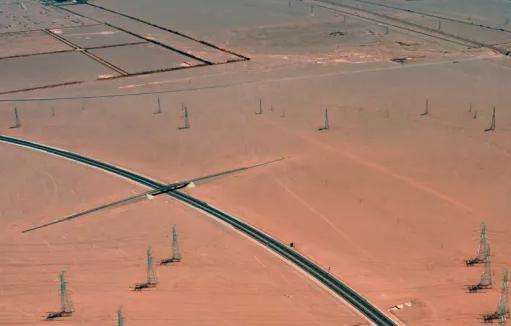Wind power is a clean energy technology that uses wind energy to produce electricity. Its power generation efficiency is affected by many factors, including the following aspects:
Wind speed: Wind speed is the speed of the wind. factor that affects wind energy. One of the most important factors in the efficiency of electricity production. The higher the wind speed, the faster the wind turbine spins and can produce more electricity. Normally, wind turbines start generating electricity when the wind speed is greater than 3 meters per second, and the wind power generation efficiency is highest when the wind speed is greater than 10 meters per second. second.
Wind direction: Wind direction also affects the efficiency of wind power generation. Different wind directions will cause the wind turbine blades to be affected.caused by different wind forces and directions, thereby affecting the efficiency of electricity generation.
Altitude: Altitude also affects the efficiency of wind power generation. In higher altitude areas, the air density is lower and the wind force on the wind turbine blades is also lower, which in turn affects the efficiency of electricity generation.
Temperature: Temperature also affects the efficiency of wind power generation. When the temperature is higher, the air density is lower and the wind force on the wind turbine blades is also lower, which in turn affects the efficiency of electricity generation.
Wind Turbine Design and Quality: The design and quality of a wind turbine also affect its power generation efficiency. Excellent design can enable wind turbines to efficiently produce electricitycited low wind speed, and high quality materials can extend the life of wind turbines.
The parameters required for wind energy calculation can be provided by the Xihe Energy big data platform (xihe-energy) .
You can do an experiment. Take two paper pinwheels and place them one behind the other in front of the fan to see if the one in the back spins.
Once the wind spins a generator to produce electricity, the wind energy is converted to kinetic energy and the wind energy is reduced. If there is a generator directly behind it, the wind energy received will be reduced.
-------------------------------------------- -- -------------
Additional information:
1. As the poster says, if installed in a pipe, the wind turbine on its back will naturally rotate, because when the wind blows from one end, it will naturally rotate.will inevitably blow from the other end, as the pipe changes the wind direction, forcing the wind direction disrupted by the windmill to return to its original direction. But wind turbines are built in nature and the wind flows freely without a pipe to hold it. The wind blows in one direction, and after passing the wind turbine, its direction is disrupted and its speed is reduced.
2. I don't quite understand this question.
The wind turbine rotates slowly because the wind speed at that time is slow. The faster the wind speed, the faster the rotation speed. The wind does not only blow between the blades, because the direction of the blades is not parallel to the direction of the wind, but at a certain angle. The wind blows on the blades, causing them to spin. In this process, the wind blows against the leaves. The leaf works and the kinetic energy of the wind is converted into the kinetic energy of the generator.
PrConsider an extreme example: the wind blows on a wall, the wall does not fall, the wind speed drops to zero, and the wall receives an external force. If the wall collapses, the wind speed will not be zero, but it will slow down as work is being done on the wall – the same as a generator.
-------------------------------------------- -- -----------
Additional 2:
1. As the poster says, air entering the duct is theoretically continuous, wind enters. A uniform duct (same duct cross section) and the instantaneous velocity at the duct outlet should be the same because there is no air volume loss. This should get all the fans going.
The condition we assume here is a cylindrical pipe with the same cross section. Since the wind direction does not change, we draw the above conclusion. The original poster previously assumed a small box with two opposing holes. If it ist a square box (the kind with edges), it's hard to tell whether to open two holes on each opposite side. Since gas swirls will occur in the corners of the square box, we also need to consider various changes in the gas inside the box. . . Very complicated. If you are interested, I suggest you read some books on fluid mechanics.
2. When the fan blades are stationary, the gap between them is indeed large; but once the fan blades rotate, the gap between them will become smaller. For example, when an electric fan is running, can you see the spaces between its blades? ----can't. But when you turn off the switch, the fan blades spin slower and slower and the gaps become more and more obvious.
Thus, when the blades of the wind turbine are stationary or rotating slowly, there isra from the breeze or air passing between the blades; when the wind speed increases and the blades spin faster and faster, there will be no wind. gaps.














